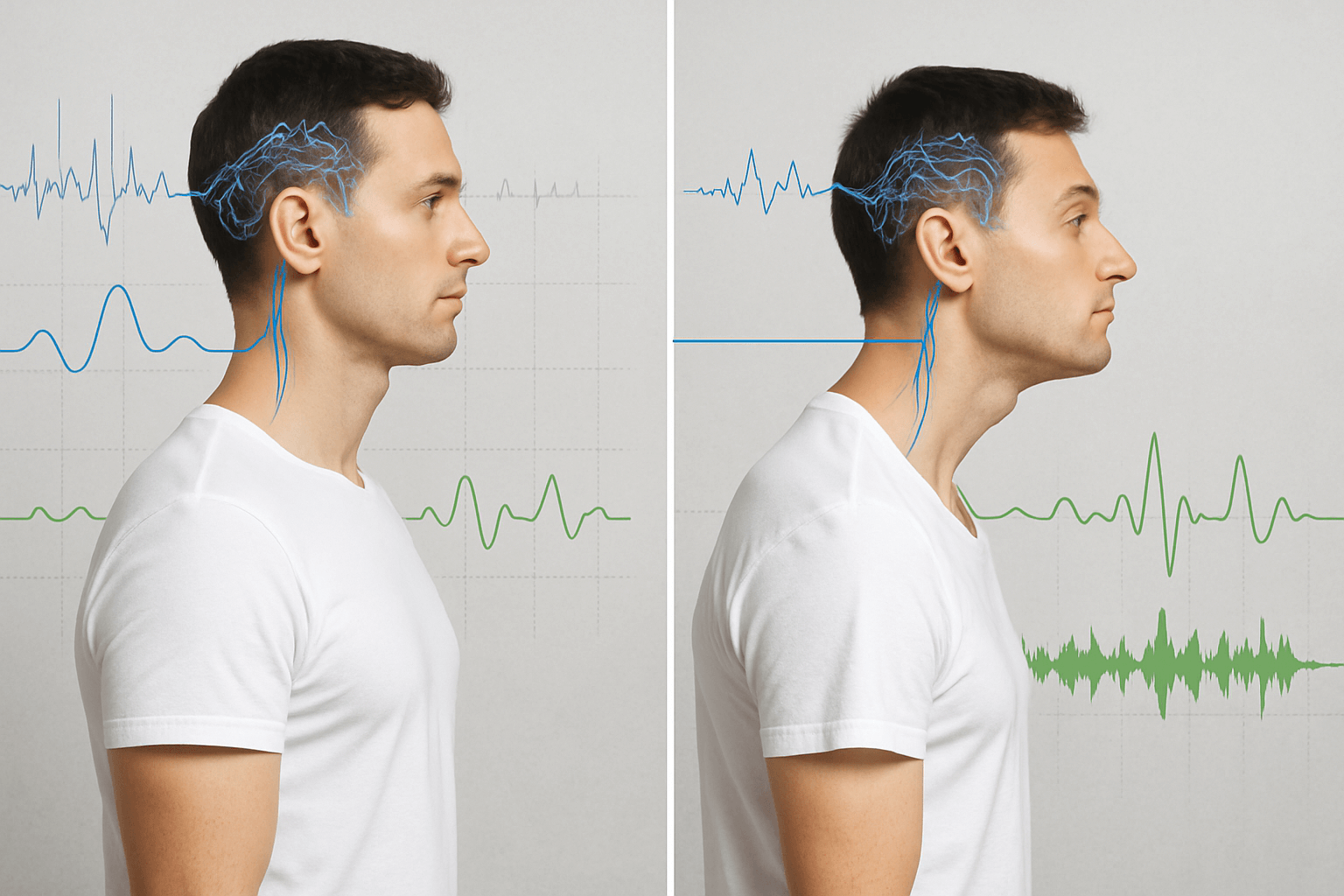Introduction
Let’s get straight to it: Bad posture isn’t just about sore shoulders or a hunched back—it can quietly wreak havoc on your pelvic floor too. That’s right, the way you sit, stand, and slouch can influence everything from bladder control to core strength and even your confidence. Most people only think about their pelvic floor during those dreaded “Kegel” conversations or after a sneeze gone wrong, but the truth is, bad posture harming your pelvic floor is a real and growing concern. So, what’s the connection, and what can you do about it? Let’s break it down.
TLDR – Quick Guide
- Bad posture isn’t just an upper-body problem—it can weaken your pelvic floor muscles.
- Slouching compresses the abdomen, disrupts breathing, and puts extra strain on the pelvic region.
- Pelvic floor dysfunction can lead to leaks, lower back pain, and core weakness.
- Small daily changes to posture and movement habits can protect both your spine and pelvic floor.
- Awareness, exercises, and professional help keep your pelvic floor—and confidence—strong.
Detailed Breakdown
1. Meet Your Pelvic Floor: The Unsung Hero
Your pelvic floor is a sling of muscles at the base of your pelvis, supporting the bladder, bowel, and, in women, the uterus. It works silently behind the scenes—until something goes wrong. A strong pelvic floor means better control, support, and stability. A weak one? Think leaks, discomfort, and a weaker core.
2. How Bad Posture Sets the Stage for Trouble
Let’s talk posture. When you slouch—especially if you spend hours hunched over a screen—your spine curves forward, your chest collapses, and your pelvis tilts out of alignment. This posture:
- Compresses abdominal organs: Less room for everything, more pressure on the pelvic floor.
- Disrupts breathing: Shallow chest breathing means the diaphragm and pelvic floor stop working in sync.
- Weakens muscles: Over time, slouching switches off core and pelvic muscles, making them weaker and less responsive.
In short, bad posture harming your pelvic floor is no myth—it’s the hidden cost of modern living.
3. Common Signs Your Pelvic Floor Is Feeling the Strain
- Leaking when you sneeze, laugh, or exercise.
- Unexplained lower back, hip, or pelvic pain.
- Feeling of heaviness or “dragging” in the pelvic area.
- Trouble fully emptying your bladder or bowels.
- Decreased core strength and poor posture that’s hard to correct.
These symptoms are common, but they’re not “just part of aging”—they’re signals that your posture and pelvic floor need attention.
4. Who’s at Risk? (Hint: Almost Everyone)
It’s not just new mums or older adults who need to worry. If you:
- Spend long hours sitting, especially with poor ergonomics.
- Do high-impact sports or heavy lifting with poor form.
- Are recovering from injury or surgery.
- Carry extra weight.
- Have chronic cough or constipation.
You could be at risk for bad posture harming your pelvic floor—no matter your age or fitness level.
5. Prevention and Repair: What Can You Do?
Fix Your Posture
- Sit up tall: Feet flat, shoulders relaxed, spine naturally curved.
- Move often: Stand up and stretch every 30–60 minutes.
- Align your pelvis: Avoid tucking or tilting; find neutral.
Strengthen Your Core (Not Just Abs!)
- Engage your deep abdominal muscles and pelvic floor together—think gentle lifts, not crunches.
- Try low-impact activities like fast pace walking, and these 4 core exercises.
Breathe Better
- Practice diaphragmatic breathing—let your ribcage and belly expand with each breath, allowing your diaphragm and pelvic floor to move in sync.
Listen to Your Body
- Don’t ignore leaks, pain, or pressure.
- Seek professional advice if problems persist or worsen.
Key Takeaways
- Bad posture harming your pelvic floor is more common than most realize—and it’s fixable.
- Your spine, core, and pelvic floor all work as a team; support one, support them all.
- Good posture, daily movement, and listening to your body can help you stay strong, confident, and leak-free at any age.
FAQs
1. Can bad posture really cause pelvic floor problems?
Yes, bad posture can weaken the pelvic floor by putting extra pressure on these muscles, disrupting their natural function, and causing them to work less efficiently.
2. What are the most common symptoms of a weak pelvic floor from poor posture?
Common symptoms include urinary leakage, pelvic heaviness, lower back pain, and reduced core strength. These signs often develop gradually and can be improved with better posture and targeted exercises.
3. Are men affected by bad posture harming the pelvic floor?
Absolutely! While women often hear about pelvic floor health, men can also experience weakness and symptoms—especially after surgery or if they spend long hours sitting with poor posture.
4. How quickly can posture changes help my pelvic floor?
Many people notice improvement within weeks of adopting better posture and regular pelvic floor exercises. Consistency is key for lasting results.
5. When should I see a pelvic floor specialist?
See a specialist if you have ongoing leaks, pain, or discomfort that doesn’t improve with self-care. Early intervention makes recovery faster and easier.






